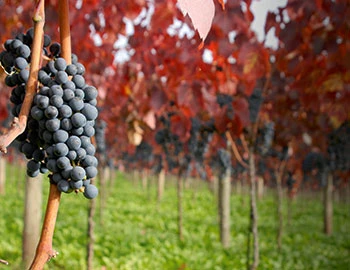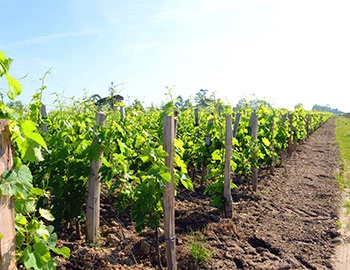Péssac-Léognan
Pessac-Léognan: top crus from the suburbs
Pessac-Léognan is a communal appellation (following the example of the village appellations in the Médoc) located in the northernmost part of the Graves region. Its immediate proximity to the city of Bordeaux has drastically altered the area in recent years. Many chateaux have had to yield to settlement pressures. For this reason, some of the very best Bordeaux terroirs are located in the new suburbs. Top crus are produced on deep gravel soils, which combine the greatest possible elegance and power in the best Bordeaux style.
White wines from Péssac-Léognan
Red wines from Péssac-Léognan
The Romans are said to have cultivated excellent wines south of Bordeaux 2,000 years ago. But the real boom for wines from Graves – in particular those from the Pessac-Léognan sub-region – began in 1154, when Eleanor of Aquitaine was crowned queen of England, after which trade in Bordeaux wines greatly intensified. The wines that first became a sensation at the time, as “claret”, came from this area. Today's Château Pape Clément already existed at the time. Pope Clement V was one of many who followed the owner family, and the estate has been named after him since 1305.
The inhabitants of the villages south of Bordeaux long subsisted through forestry. Wine was only cultivated in forest clearings. Today, the scenery has changed completely. Even in Martillac, the southernmost wine growing community and hence the farthest removed from the city of Bordeaux, the population has grown in the last 50 years from 870 to 2,800. Due to the expansion of the city, Bordeaux has lost roughly 250 wineries in the last century. The two most prestigious chateaux in the area, Haut-Brion and La Mission Haut-Brion, have long been situated in the suburban belt.
White crus are also superb
For centuries, the area was called “Hautes Graves”, and in 1987 was first accorded the privilege of its own appellation, with the name Pessac-Léognan. This special status was warranted as early as 1953, when the estates in all of Graves were newly classified. All of the 16 crus classified then are located in the Pessac-Léognan sub-region. While the vines are cultivated overwhelmingly in wide terraces further south, they grow here in perfectly aligned slopes. In the deep gravel soils, Cabernet presents its best qualities. Where sand is also at play, Merlot is also cultivated. While Cabernet Sauvignon sets the tone in many top crus, Merlot is not far behind. Of the total of roughly 1,300 hectares of cultivation area, 1,000 are stocked with red varieties. The roughly 300 hectares on which white wines are cultivated yield the highest-level, most storable white crus in all of Bordeaux. Sémillon generally dominates in these, with a proportion of roughly 60 percent.











